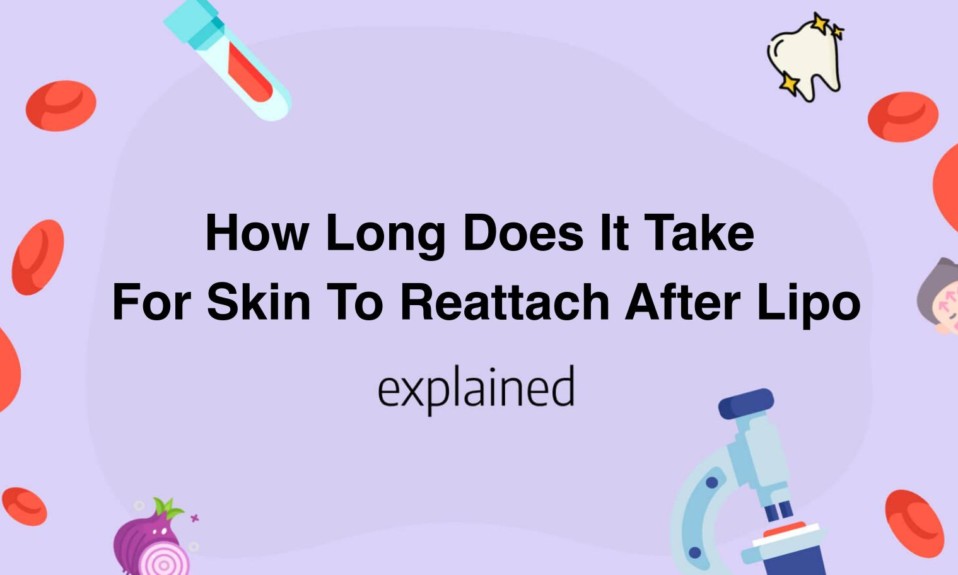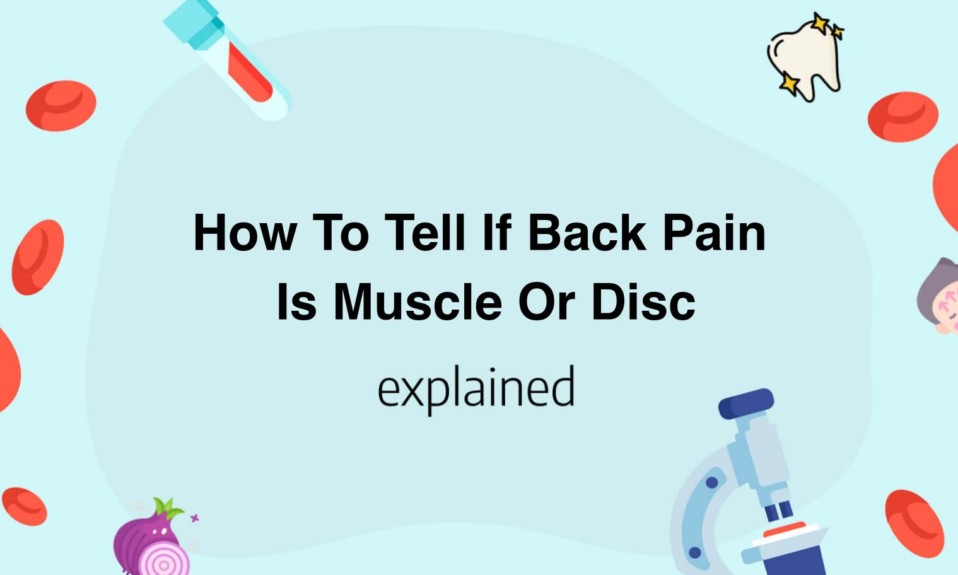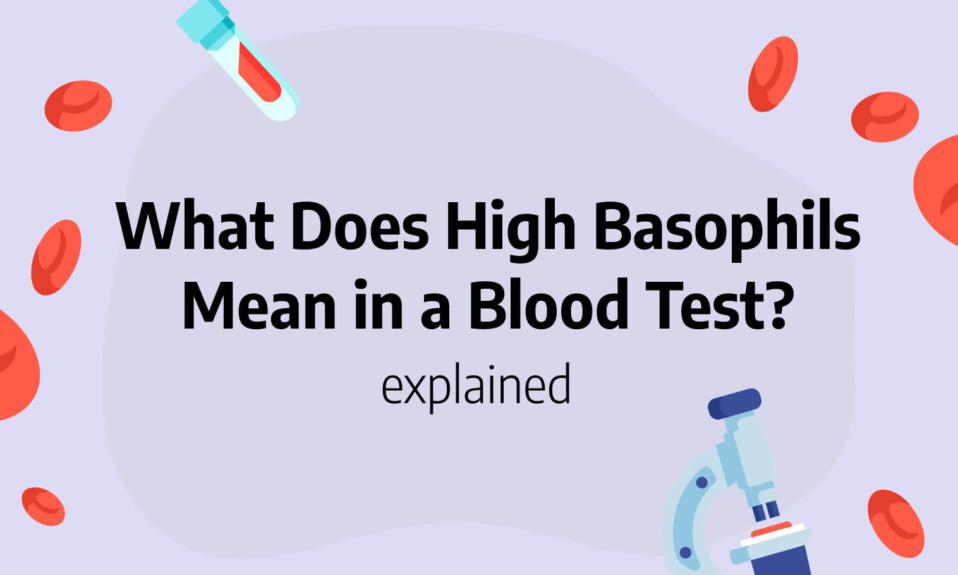If you are considering liposuction or have recently had the procedure, you may be wondering how long it takes for your skin to reattach.
The recovery process after liposuction involves several steps, including managing swelling, bruising, and discomfort.
However, the healing timeline for skin reattachment after liposuction can vary depending on various factors.
In this article, we will explore the timeline for skin reattachment after lipo and what factors can affect the healing process.
- Skin typically reattaches relatively quickly after liposuction, often within a matter of days to weeks.
- The amount of time it takes for skin to reattach after lipo can vary depending on a number of different factors, including the specific technique used, the extent and location of the procedure, and the patient’s individual healing rate.
- In some cases, additional steps may be taken to promote more effective reattachment of the skin and improve overall healing, such as the use of compression garments or topical treatments.
- Patients can typically expect to see gradual improvements in the appearance and texture of their skin over the weeks and months following liposuction, although the final results may not be fully visible for several months.
- It is important for patients to closely follow their surgeon’s post-operative instructions and attend all follow-up appointments to ensure optimal healing and long-term success.
Understanding the Lipo Procedure and Skin Attachment
A lipo procedure, also known as liposuction, is a cosmetic surgery that aims to remove excess fat from the body through a suction technique.
This procedure is commonly used to target areas such as the abdomen, thighs, buttocks, and arms.
While it is an effective way of contouring the body and achieving a slimmer appearance, it is essential to understand the potential risks and complications involved.
One of the most significant risks associated with the lipo procedure is skin attachment.
Skin attachment, also called skin adhesion, occurs when the skin adheres to the underlying tissue after the surgery.
This can cause discomfort, pain, and a noticeable change in the texture and appearance of the skin.
To prevent skin attachment, many surgeons use advanced techniques that promote skin retraction and stimulate collagen production.
These techniques include ultrasound-assisted liposuction and laser-assisted liposuction.
By using these techniques, surgeons can achieve better skin elasticity and prevent skin attachment.
In addition to using advanced techniques, it is essential to maintain healthy skin before and after the procedure to minimize the risk of skin attachment.
This includes proper hydration, a healthy diet, and a skincare routine that involves moisturizer and exfoliation.
By taking these steps, patients can ensure optimal results and reduce the risk of complications.
It is important to note that there is no guarantee against skin attachment, and some patients may still experience this complication after the lipo procedure.
However, in most cases, it is mild and easily treated with pain medication and a compression garment.
In conclusion, the lipo procedure is an effective way of removing excess fat from the body and achieving a slimmer appearance.
However, it is crucial to understand the potential risks and complications involved, such as skin attachment.
Patients should maintain healthy skin before and after the procedure and work with an experienced surgeon who uses advanced techniques to minimize the risk of skin attachment.
By doing so, patients can enjoy the benefits of the lipo procedure and achieve their desired body contour.

Factors Affecting Skin Attachment After Lipo
One of the most common cosmetic surgeries performed nowadays is liposuction.
This procedure involves removing excess fat from specific body parts to enhance their shape and reduce stubborn fat pockets.
However, skin attachment after lipo is essential in achieving the desired aesthetics.
When your skin has poor attachment, it can lead to uneven contours, dimpled skin, and visible scarring.
So what affects skin attachment after lipo?
- Elasticity of Skin: The elasticity of your skin plays a crucial role in how well it recovers after liposuction.
Younger people with good skin elasticity tend to have the best results and recover faster.
- Amount of Excess Fat Removed: Liposuction is a technique that allows for the removal of excess fat from your body.
However, removing too much fat from an area can lead to sagging and loose skin, which results in poor skin attachment.
- Skill and Experience of the Surgeon: Choosing the right surgeon is one of the critical factors that affect skin attachment after lipo.
An experienced cosmetic surgeon who uses advanced techniques can help ensure that your skin is adequately reattached to your muscles to reduce the risk of scarring or dimpling.
- Postoperative Care: Good postoperative care is necessary to ensure that your skin recovers adequately after lipo.
Wearing compression garments as directed by the surgeon can also help reattach the skin to the underlying muscle layer.
As the skin loses elasticity with age, it becomes less able to conform to the new contours created by liposuction, and the result may be less smooth than anticipated.
The ideal amount of fat that should be removed is relative to the body’s size, shape, and type of skin.
Always do thorough research and trust only reputable and experienced surgeons.
In conclusion, skin attachment after lipo is a crucial factor that affects how well you recover after surgery.
Choosing the right surgeon, taking good postoperative care, the amount of excess fat removed, and your skin elasticity are factors that you should consider before undergoing liposuction.
By understanding these factors, you can work with your surgeon to achieve the best possible results and contour your body the way you’ve always wanted.
Importance of Post-Operative Care for Skin Reattachment
Post-operative care for skin reattachment is a crucial aspect of the healing process.
After any type of skin reattachment surgery, such as skin grafting or flap reconstruction, proper care is necessary to ensure successful healing and minimize the risk of complications.
One of the most important components of post-operative care is keeping the wound clean and free from infection.
This often involves using specialized dressings or bandages to protect the wound site and prevent bacteria from entering.
Patient education is also essential for post-operative care.
Patients need to understand the importance of following the surgeon’s instructions regarding activity level, medications, and wound care.
For example, they must avoid sports or heavy lifting to ensure the wound site isn’t compromised.
They also need to take prescribed antibiotics or other medications to decrease the risk of infection.
Another important component is proper nutrition.
A diet high in protein helps to speed up the healing process.
Patients should consume lean protein sources as this will help their body to repair itself faster.
Smoking increases the risk of complications, so it should be avoided altogether during the healing process.
It’s also essential to monitor the wound site to ensure there’s no sign of infection or other complications.
This requires regular follow-up visits with the surgeon and any other healthcare professionals involved in the patient’s care.
Any concerns should be addressed as soon as possible to prevent further complications.
In conclusion, post-operative care is a critical component of the healing process after skin reattachment surgery.
Proper wound care, patient education, nutrition, and monitoring are all necessary to ensure the best possible outcome.
Following these guidelines can help patients minimize the risk of complications, speed up the healing process, and improve their overall quality of life.
Recommended Recovery Period After Lipo Surgery
After undergoing liposuction surgery, it is crucial to give your body ample time to recover.
The recommended recovery period for liposuction surgery is typically around two to four weeks, depending on the extent of the procedure.
During this time, it is important to follow all post-operative instructions given by your surgeon to ensure a smooth recovery.
Immediately following the surgery, it is recommended to take it easy and avoid any strenuous activity.
You should have someone to help you at home for the first few days to help you move around and keep an eye on you.
You can expect some pain, swelling, and bruising in and around the treated areas, but these should start to improve within a few days.
Your surgeon may advise you to wear a compression garment for several weeks after the surgery to help minimize swelling and aid in the healing process.
It is important to wear this garment as instructed to ensure proper healing.
During this time, it is also recommended to avoid taking any blood-thinning medications or supplements, such as aspirin or fish oil.
After the first week or so, you may start to feel better and be able to resume some of your normal activities.
However, it is important to still take it easy and avoid any strenuous exercise or heavy lifting.
It is also important to continue wearing your compression garment as instructed.
After two to four weeks, most patients are able to return to their normal activities and exercise routines.
Your surgeon may advise you to continue wearing your compression garment for several more weeks, and may also recommend regular massages or other treatments to further aid in the healing process.
In conclusion, the recommended recovery period after liposuction surgery is around two to four weeks, depending on the extent of the procedure.
It is important to follow all post-operative instructions given by your surgeon, wear your compression garment as instructed, and avoid strenuous activity during this time.
By giving your body the proper time to heal, you can ensure the best possible results from your liposuction surgery.
You’ll also like: Water Sound In Belly During Pregnancy
How Long Does It Take For Skin To Reattach After Lipo
After undergoing liposuction, the healing process can be different for each individual.
The length of time it takes for the skin to reattach can vary depending on factors like age, skin elasticity, the size of the area treated, and the amount of fat removed.
Generally, it can take several weeks to several months for the skin to reattach fully.
It is important to follow post-operative instructions provided by your doctor to ensure proper healing.
During the first few days or weeks after the procedure, patients may experience swelling, bruising, and discomfort.
It is important to rest and avoid strenuous physical activity during this time to allow the body to heal.
Wearing compression garments can also help with swelling and aid in the healing process.
In addition to following a proper recovery plan, there are steps that can be taken to promote the health of the skin and aid in reattachment.
Staying hydrated, maintaining a healthy diet, and avoiding smoking are all important factors in skin health.
Proper self-care practices like gentle cleansing and moisturizing can also help promote healthy skin.
It is important to note that abnormal healing or complications can occur after liposuction, and patients should contact their doctor if they experience any concerning symptoms.
This can include excessive swelling, bleeding, or signs of infection at the site of the procedure.
In conclusion, the length of time it takes for skin to reattach after liposuction can vary depending on the individual and various factors.
However, following a proper recovery plan and taking steps to promote skin health can aid in the healing process.
If you have concerns about healing after liposuction, it is important to consult with a qualified medical professional for personalized advice.
You’ll also like: Why Is My Pregnant Belly Soft When I Lay Down
Risks of Poor Skin Reattachment After Lipo
Loose and sagging skin is a common concern for those who have undergone liposuction surgery.
Poor skin reattachment is a risk that individuals must be aware of before signing up for the procedure.
This occurs when the skin does not conform to the new body shape leading to folds, dimples, and uneven textures.
The risk of poor skin reattachment is higher in individuals with poor skin elasticity and those with a large amount of excess skin.
To prevent this, plastic surgeons may recommend additional treatments such as body contouring, which can help to tighten the skin and achieve a smooth appearance.
Poor skin reattachment can also occur if proper care is not taken during the recovery period.
Patients are advised to wear compression garments to help reduce swelling and ensure proper skin adherence.
Failure to wear these garments or not wearing them for the recommended duration can result in poor skin attachment.
In addition, smoking and exposure to the sun should be avoided, as they can delay the healing process and cause damage to the skin.
In some cases, poor skin reattachment may be beyond the patient’s control.
The quality of the skin and the elasticity of the tissue are genetic factors that cannot be altered.
Therefore, individuals with poor skin elasticity should carefully consider the risks associated with the procedure and discuss the likelihood of skin reattachment issues with their plastic surgeon.
In conclusion, while liposuction surgery can provide many benefits, there are also risks associated with it, including poor skin reattachment.
To minimize this risk, patients should carefully follow their surgeon’s post-operative instructions, including wearing compression garments and avoiding smoking and sun exposure.
Those with poor skin elasticity should be aware of the increased risk and discuss their options with their surgeon.
By taking proper precautions and understanding the risks, patients can achieve the desired outcome without experiencing skin reattachment issues.
Read also:










